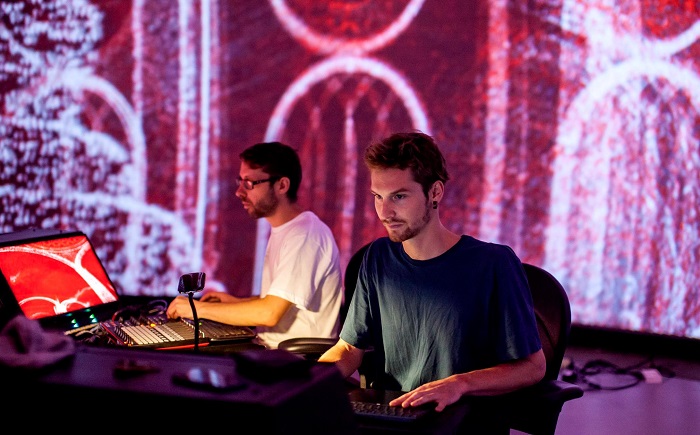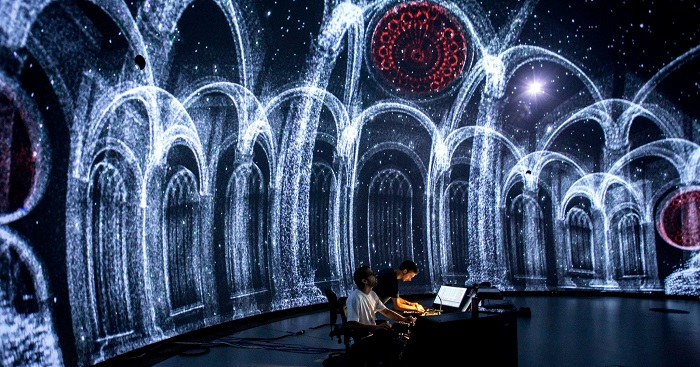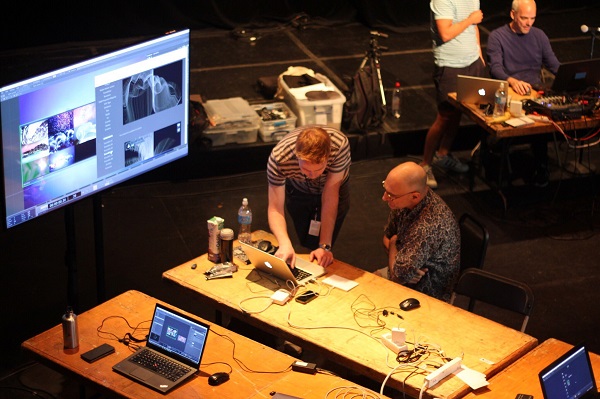Inviting media artists from around the world to discuss the future of creative spaces in cities
The evolution and future of creative spaces in urban cities was the focus of the 18th edition of the MUTEK international festival of digital creativity and electronic music. Top artists within the digital media realm from London, Mexico City, Barcelona and Berlin gathered in Montreal from Aug. 22 to 27.
The festival featured panel conferences, an exhibition focusing on subversions of reality and electronic music parties. There was also a digital lab workshop set up by TouchDesigner, a real-time visual development platform used for creating interactive media systems, such as visuals for music. The workshop allowed digital technicians to learn more about audio visualization techniques on the TouchDesigner platform.

On the second day of the festival, the focus was on the city of London and its creative spaces. Londoners who play a role in their local digital art or music communities were invited to participate in panel conferences to discuss their projects and challenges. One speaker was Marie McPartlin, the studio director for Somerset House Studios, which commissions one of those more well-known series of events in London. McPartlin explained how this creative space, Nocturnal City, plays a big role in London’s nightlife and pushes the boundaries of underground culture.
Alongside McPartlin at the panel conference was the director of Montreal’s Never Apart, Anthony Galati; Oliver Baurhenn, the curator and organizer of the CTM Festival in Berlin; and Danji Buck-Moore, a collective member of the creative events space, La Plante, in Montreal.
The panelists discussed the need for spaces that allow artistic experimentation in urban environments and how new, creative spaces can foster diversity and inclusion.
Galati is the music director at Never Apart, a non-profit organization in Montreal which aims to bring social change and spiritual awareness through cultural programming.
Galati has been helping creatives in Montreal gain visibility by providing them with resources to evolve their artistic endeavours. According to Galati, access to creative spaces is difficult and venues in Montreal are lacking. “People are creating more, but access to creative space is a bit tougher nowadays, and this is why we need spaces that promote and perpetuate artistic behaviour and endeavours,” he said.
While there is a general need for creative space in the city, Galati put a particular emphasis on providing such spaces for low-income families and teenagers. The reason is that price is another limiting factor for participants. “It’s expensive to make music, it’s expensive to make art — more collaboration is what cities need,” Galati said.

The second panel conference discussed the present and future of audiovisual practices in music festivals, film and digital arts. The panel invited the senior director of the British Film Institute, Tim Stevens; Montreal-based digital artist Myriam Bleau; Antonia Folguera, a content creator for the Sonar Festival in Barcelona; and multidisciplinary artist Paul Purgas from London.
“It’s a very fertile time for art because everyone has a story to tell — we want to support experimentation in the U.K,” said Stevens, who has more than 16 years of experience in film, live cinema and digital media. This was his third time attending the MUTEK festival in Montreal. According to Stevens, creative expression is currently too focused on technological mediums rather than the story itself. “We’re at a time where people are thinking, ‘I want to tell a story, now what’s the best form of technology to use to tell this story?’” he said. “I think my biggest advice would be: don’t worry about technology. Think of the story that you want to tell because that’s where the emotion, passion and the drive comes from.”
“When you are telling a good story, it doesn’t matter what you use,” he added. “I think people obsess too much about the form that they are using when they should just focus on their story.”
Furthermore, the panel discussed the role of immersive technology in the future of audiovisual practices, such as sound and visual aesthetics in movies. According to Stevens, at the moment, VR is only monetized through video games. As it transitions to film and art, people are trying to work out what that means for the future of these mediums. “My biggest concern about VR is that it takes away community experience,” Stevens said. “There is no audience there — it’s just an experience that one person is having. What I love about visual and audio stuff is doing live cinema and seeing everyone’s reactions.”
Stevens also made a point to reflect on the challenges creativity faces in his city. “London is a big city, and there is a lot going on. There [are] a lot of problems with the culture there when it comes to art because you need to make a very loud noise and spend a lot of money to be able to cut through.”
The common thread that emerged throughout the festival was the need to include more space for creativity in urban cities and to make these spaces more accessible and inclusive. “In an ideal world,” Galati said, “there would be cubes everywhere that people can use as multi-purpose spaces.”
Feature photo by Sandra Hercegova




